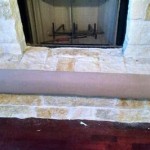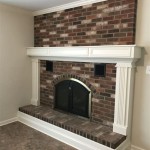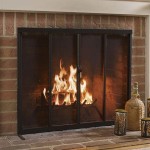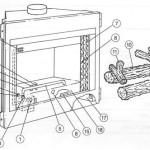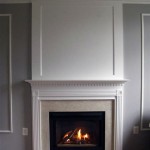Masonry Fireplace Design: A Guide to Creating a Warm and Welcoming Hearth
A masonry fireplace is more than just a source of heat; it's a focal point that adds warmth, character, and charm to any room. It's a place to gather, share stories, and create lasting memories. However, designing a masonry fireplace that seamlessly integrates into your home requires careful consideration of several factors. This article will delve into the key elements of masonry fireplace design, providing you with the knowledge to build a unique and functional hearth that will be enjoyed for generations to come.
Choosing the Right Fireplace Style
Before embarking on the design process, it's essential to select a fireplace style that aligns with your aesthetic vision and complements the existing architecture of your home. The most common styles include:
- Traditional: Characterized by ornate details, such as raised brickwork, decorative molding, and intricate mantelpieces, traditional fireplaces create a classic and timeless feel.
- Modern: Clean lines, minimalist designs, and contemporary materials, such as steel, glass, and concrete, define modern fireplaces, offering a sleek and polished look.
- Rustic: Emphasizing natural materials like stone, wood, and exposed brick, rustic fireplaces bring a sense of warmth and simplicity to any space.
- Contemporary: Combining elements of modern and traditional styles, contemporary fireplaces create a balanced and sophisticated look, often incorporating bold colors and unique textures.
Beyond aesthetics, consider your heating needs and the size of your room when choosing a fireplace style. For example, a large, open hearth fireplace is well-suited for expansive living rooms, while a smaller, enclosed fireplace might be more appropriate for intimate spaces.
Planning the Layout and Placement
The placement of your fireplace will directly impact its functionality and aesthetic appeal. Ideally, it should be positioned in a central location, drawing attention and creating a natural gathering point. However, structural limitations and existing architectural elements may necessitate alternative placements.
Here are key factors to consider when planning the layout:
- Accessibility: Ensure easy access to the fireplace for maintenance and fuel loading.
- Structural considerations: The fireplace's weight and heat output may require special support beams or foundation reinforcement.
- Fireplace size and shape: The size and shape of the fireplace should be proportionate to the room it occupies, creating a balanced and visually pleasing composition.
- Chimney placement: The flue must be properly positioned for efficient venting and fire safety. A qualified chimney sweep should be consulted for design and installation.
Material Selection: Creating a Unique and Functional Hearth
The choice of materials significantly influences the overall character and performance of your masonry fireplace. Common building materials include:
- Brick: A versatile and durable material that offers a range of colors, textures, and patterns, providing flexibility in achieving desired aesthetics.
- Stone: Adds a natural, rustic charm. Options include granite, limestone, marble, and sandstone, each offering distinct textures and colors.
- Concrete: Highly durable and cost-effective, concrete provides a sleek, modern look when cast into desired shapes and forms.
- Metal: Steel and cast iron are commonly used for fireplace inserts, hearths, and fireplace doors, adding a modern touch and enhancing heating efficiency.
Consider the properties of each material, such as thermal conductivity, heat resistance, and aesthetic appeal, when making your selection. For example, stone and brick possess excellent heat retention qualities, making them ideal for traditional fireplaces that prioritize warmth and ambiance. Conversely, metal offers faster heating and a more contemporary aesthetic.
Ultimately, the best combination of materials depends on your design preferences, budget, and the desired ambiance for your fireplace. Consulting with a qualified masonry professional can help you navigate the complexities of material selection and ensure the proper integration of different elements within your design.

Masonry Stoves Heaters And Fireplaces Build Your Own
The Secret To A Warm Fireplace Dale Anderson Masonry Wisconsin Brick And Stone Masons

Fireplaces A Construction Primer Masonry Fireplace Chimney Design Dimensions

Concrete Masonry Fireplaces Entire Tek

Prefab Vs Masonry Crofton Md Clean Sweep Of Anne Arundel County
Residential Fireplace Design

01 Fireplace Detail Masonry Brick Indoor

Chapter 10 Chimneys And Fireplaces Massachusetts Residential Code 2024 Upcodes

Masonry Fireplaces Cottonwood Modern Life Of An Architect

Masonry Vs Zero Clearance Thermo Rite Manufacturers
Related Posts

